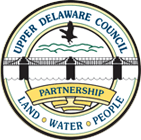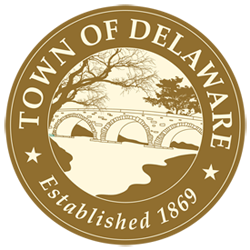|
> First Settlers
> Lumber Industry
> Erie Railroad
> Vacation Destination
|
|
It wasn't until after the Revolution when the environment was peaceful enough that the lumber rafting industry grew and would take millions of board feet of timber from the virgin forests of the Upper Delaware to the fast growing cities of Philadelphia, Trenton, and Easton.
By 1800 lumbering was the most important business along the Upper Delaware River. Sawmills and tanneries were built and new communities began to appear. The lumber and rafting industry peaked in 1875 with approximately 3,000 rafts floating downriver for sale that year.
The first sawmill in Callicoon was built by Edward Greswold a NY lawyer and son of Joseph Greswold, acquired land from his father and erected a mill on the site of Roche's Garage storage building area. In addition to the mill, Greswold also built a barn and blacksmith shop with the intent of starting a village. This venture was unsuccessful; however, it was from this site that the village of Callicoon later grew. In 1890 Martin Hermann erected his mill and established a lumber business on the site of the original mill along the Callicoon Creek.
As lumber for the basis of commerce, new communities such as Kenoza Lake, Hortonville and Falls Mill appeared. A man named Woodruff came to the area from Poughkeepsie around 1812 and built a sawmill on what is now known as Bauer's Pond. He was followed by Stephen Gedney of New Paltz, who came to Cochecton in 1820 and later purchased land on the west side of Kenoza Lake, originally named Pike Pond. It was Captain Mouthrop who grew Kenoza Lake into a full fledged community. He was a sea captain and War of 1812 privateer. He came from New Paltz about 1825. In 1831, he built a dam at Pike Pond and added a sawmill a year later. Edwin R. Lawrence ran a sawmill in Falls Mill, situated along the Callicoon Creek outside of Hortonville. Between 1850 to 1880 he made wagons, sleighs and furniture as well as selling Pine, Hemlock and Hardwood.
Charles Horton bought property with Charles Knapp in 1848 from the Griswold Estate and a year later built a tannery in Hortonville. With a succession of business partners including Isaac Clements and Thomas Casey, the tannery showed excellent profits during the Civil War period. Horton & Clements Tannery remained in business until about 1873, using tannin extracted from the bark of the hemlock trees to treat hides, creating leather for boots, straps, and belts to run the machinery created by the Industrial Revolution. Manufacturers of leather found it more profitable to take the hides for curing to the localities which produced hemlock bark than it was to haul the hides to the leather factories. For many years there was more sole leather produced in Sullivan County than in any other territory of equal extent in the world. The tanning industry prospered for about 40 years until it was interrupted by the Civil War.
Lumberman continued to strip the hillsides and dominate local economics. In dry weather they would cut white pine, hemlock and other varieties. They would either take the logs directly to banking areas along the Delaware River to wait for high water, others sold to local sawmills who shipped sawed timber on rafts. The raftsmen often were farmers and handymen who took extra work to swell the family's income.
By 1922, when the last raft came into Martin Hermann's mill at Callicoon, the industry had dominated the area for more than 150 years. It drained the region of its native timber, and in the process changed it from a forested wilderness into a relatively civilized world of dairy farms and small communities.
Excerpt from Mary Curtis, former Town of Delaware Historian
|



